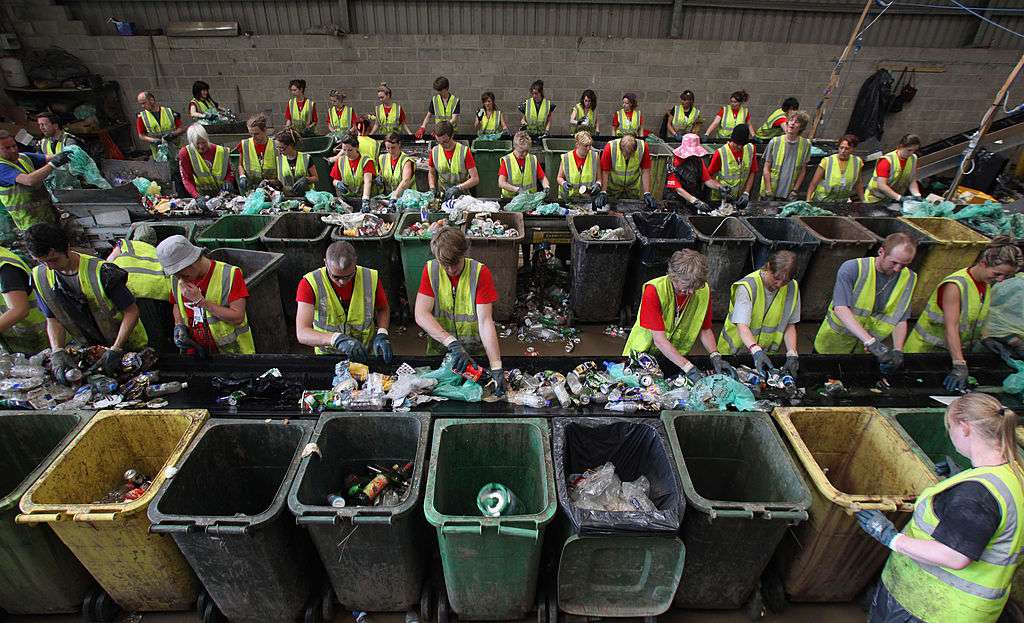Commingled recycling, or single-stream recycling, is the system via which all plastic, metals, paper, and completely different recyclables are blended proper right into a single assortment truck. This means residents do not need to variety these recyclables beforehand; they’re sorted by as soon as they arrive at a material restoration facility (MRF).
The simplicity of this method—merely put your entire recyclables within the equivalent bin—makes it all the additional participating to residents. Nonetheless, commingled recycling is not with out its drawbacks. On this text, we’ll take a look at the tactic of this recycling system, some benefits and downsides, and the way in which it compares to several types of recycling.
How Commingled Recycling Works
Single-stream recycling began within the US inside the Nineties as a low-barrier entry into recycling; it was slowly adopted by communities all through the nation.
Commingled recycling packages vary between townships. Many accept recyclables inside the following lessons:
- Plastic merchandise (Townships might solely accept plastics with specific resin identification codes.)
- Newspapers
- Paper and cardboard merchandise (might embrace magazines, cereal bins, clear egg cartons, and so forth.)
- Glass merchandise (might embrace clear meals and drinks bottles, jars, containers, and so forth.)
- Metallic merchandise (might embrace clear aluminum foil, and so forth.)
Treehugger Tip
To have the ability to determine if commingled recycling is accessible in your neighborhood, it is best to contact your native county or municipality. Furthermore, study I Want To Be Recycled, which can additionally assist you to set up how objects will probably be recycled inside your neighborhood.
After recyclables are collected, the truck then brings them to the bottom of an MRF, the place the sorting takes place. At many facilities, the provides are first positioned on a conveyor belt the place MRF employees take away all the non-recycling objects by hand. The entire objects that could be recycled are then transferred onto a sequence of deck screens, which allows the heavier objects to drop by to the underside screens, leaving the lighter objects, much like paper and cardboard, on the best show display screen.
The heavier objects are positioned beneath a magnet that removes all the metallic. Employees will study to ensure no objects are sorted into the mistaken class. They then variety the objects on the best show display screen into separate containers for paper, cardboard, and newsprint.
In any case recyclable objects are inside the acceptable bins, they’re shipped to their respective recycling facility to be processed into new provides.
Twin-Stream vs. Single-Stream Recycling
Whereas single-stream recycling consists of inserting your entire recyclables into one bin, dual-stream recycling makes use of two separate bins. Most frequently, plastic, glass, metallic, and completely different provides go into one bin, whereas paper merchandise are collected in a single different.
Twin-stream recycling requires a bit additional work on the patron’s end, as they should variety their recyclables sooner than assortment. Though it’d appear to be a small exercise, this will deter of us from recycling the least bit, or from doing so rigorously and precisely.
Execs and Cons of Commingled Recycling
Is commingled recycling additional surroundings pleasant than dual-stream recycling? Like one thing, there are every benefits and drawbacks.
Execs
The first benefit of commingled recycling is that it is comparatively easy for purchasers to participate in curbside recycling packages. Likewise, commingled recycling may also be inexpensive for the patron as they solely can buy one recycling bin, and objects are picked up by a single truck. Due to this, this method receives greater public approval in plenty of states, much like New Jersey.
Cons
Primarily probably the most important downside of commingled recycling is the elevated risk of contamination amongst recyclables. Contaminated provides might embrace objects that are not clear (much like used meals or drink containers) or glass that has shattered on its choice to a facility. Objects that are contaminated each cannot be processed right into a model new recycled product, or the model new product is of lesser prime quality.
Plus, contaminated recyclables are weak to damaging MRF instruments, which will probably be expensive for townships and facilities.
Commingled Recycling Strategies
Recycling complete has its share of environmental drawbacks. Nonetheless, in case you take half in a commingled recycling program, you could want to assure you may be doing all of your half so that your recycled objects are accurately processed. Listed below are our prime solutions:
- Guarantee any recyclable containers (whether or not or not glass, plastic, metallic, and so forth.) are clear.
- Look at that every bottle and container is empty sooner than inserting it inside the bin.
- Study labels on any objects which have further recycling pointers.
- Contact your township’s recycling division with any specific questions on provides, recycling pick-up, and so forth.
